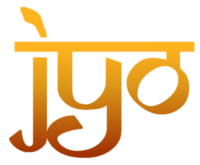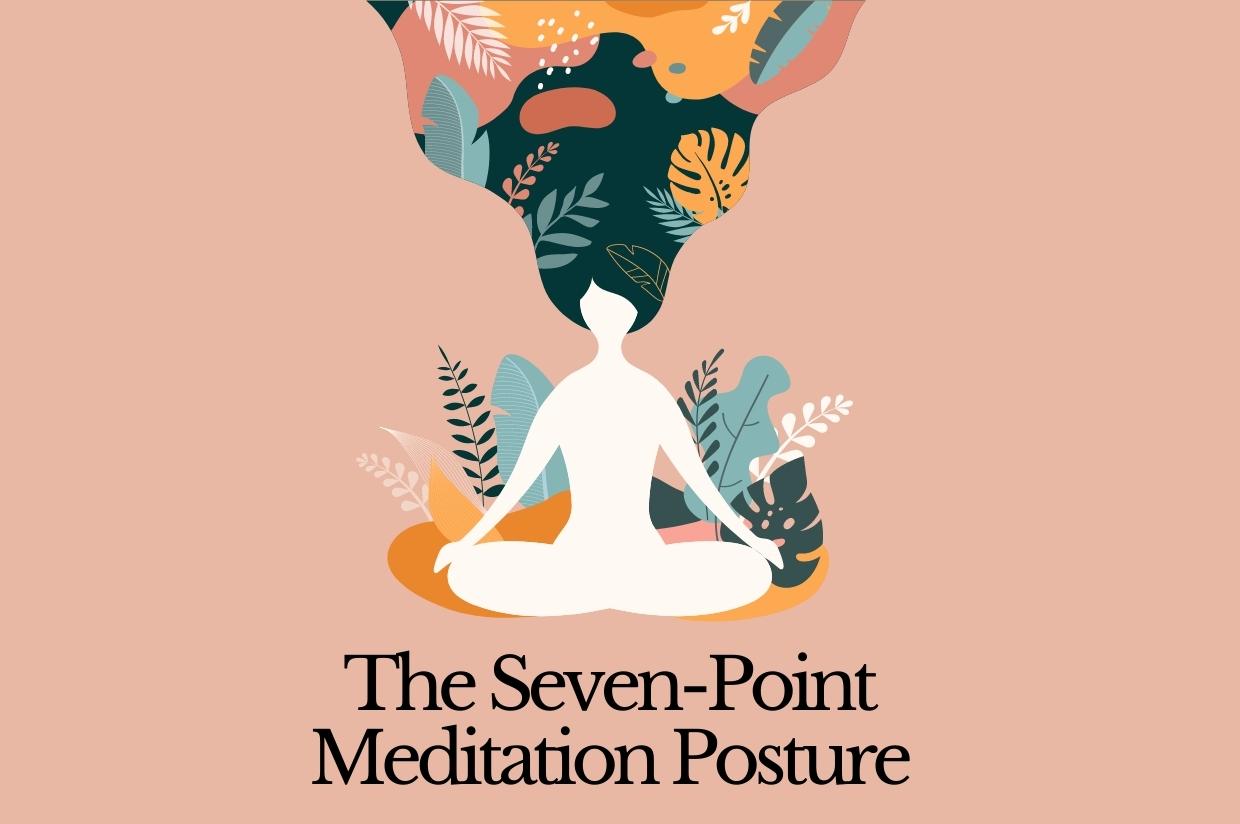In meditation, the way we engage with our physical self supports wholeness of our body, speech, and mind. Used by experienced practitioners in many traditions, the seven-point meditation posture is one way to give support to the body in order to foster a clear, attentive, and calm mind.
The posture can be adjusted depending on your physical capabilities and comfort. Below we will describe the formal posture for each point as well as provide some alternative options that may work better for you.
Jyothi V. Robertson shares a short introduction to the seven point posture in meditation, which can be listened to below.
1. Legs
While sitting on the ground or a flat surface, legs in the formal 7 point posture are crossed in full-lotus, or vajra position. Full-lotus involves crossing your legs so that each foot is placed on the thigh of the opposite leg with the soles facing upward.
Alternatives: Half-lotus, where the left foot is one the floor under the right leg and right foot is on top of the left thigh. You may also want to try a simple cross-legged posture, with both feet on the floor which is my preferred position and a firm cushion under the buttocks to slightly elevate your pelvis and help keep your back straight. If sitting on the ground isn’t an option, a chair or low bench in which both feet can be flat on the ground will also work. In this situation, sit towards the front of the chair so that you are not relying on the back of the seat to hold you upright.
2. Arms/Shoulders/Hands
Shoulders, arms and hands are in a restful position. Roll shoulders back to open your chest and heart, in a natural manner. Hands can be held loosely in your lap or on your knees. Cup your hands slightly, with the right hand on top of the left and palms facing upward if on your lap. Thumbs are touching in a formal cosmic mudra hand position which is one preferred position.
Alternatives: Hands may rest on knees or thighs, palms facing downwards.
3. Back
Your spine and back are naturally erect. Hold yourself relaxed and upright, neither rigid nor slumped. I like to envision a string pulling me up from the crown of my head, similar to a marionette. Upright, not uptight.
4. Eyes
Your eyes are held slightly open to allow some light, where your gaze is directed downwards without any fixed focus, approximately 3 to 6 feet in front of you. Eye movements left or right are avoided, but your gaze may be raised if you are feeling sleepy or lowered if your mind is too active.
Alternatives: Eyes fully closed if you find it easier to concentrate and do not become drowsy.
5. Jaw and mouth
Your mouth and jaw are relaxed, with your teeth apart and your lips lightly together.
Alternatives: If you struggle to intake enough air through your nose to maintain a steady, calm, breathe, then slightly open your lips. Depending on the particular practice, inhaling or exhaling through the mouth is recommended so the key here is to keep your mouth and jaw loose and relaxed.
6. Tongue
The tip of your tongue lightly touches the palate just behind your upper teeth.
7. Head
Your neck is in a natural position as an extension of your spine. Keep your chin tucked slightly instead of jutting forward, which will naturally direct your gaze downward.
The seven point meditation posture enhances overall alertness and is conducive to a calm, attentive, and unobstructed meditation practice. It may be difficult in the beginning, but with time it will come naturally. At the beginning of each practice, go through each point, making space for your body to settle into the correct posture. Over time, you will notice your practice deepen as you are able to sit more comfortably in meditation for longer periods and your energy flows more freely.

References:
Kathleen McDonald 1995, A guide to the seven-point posture, Tricycle, accessed 30 June 2022. www.tricycle.org/magazine/meditation-posture/
The Seven-Point Mediation Posture of Vairochana, Vajra North, accessed 320 June 2022 . www.vajranorth.org/the-seven-point-mediation-posture-of-vairochana/

